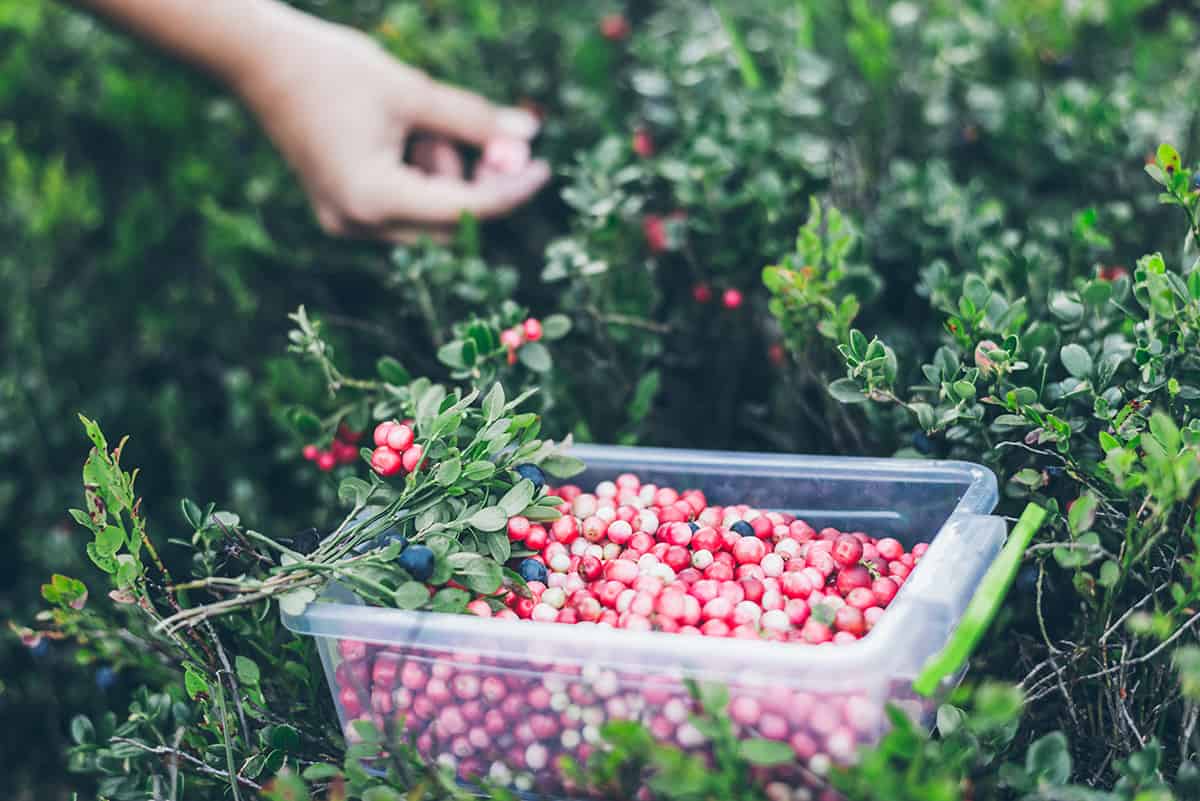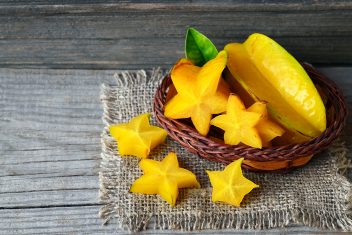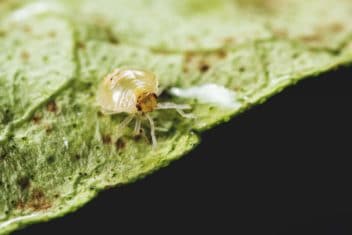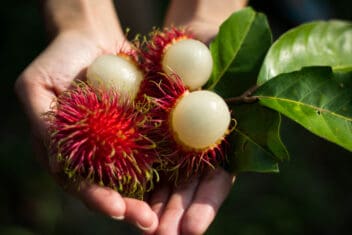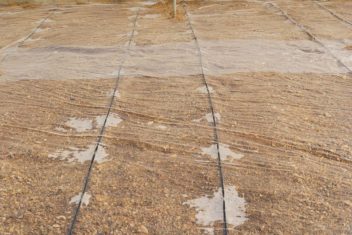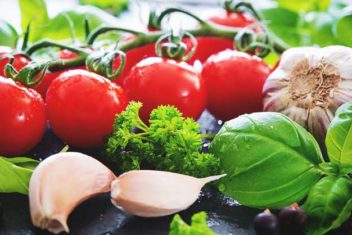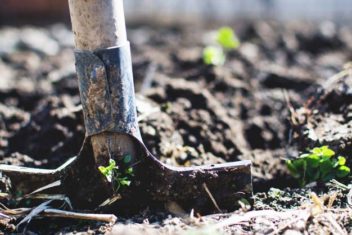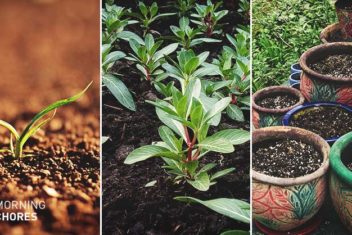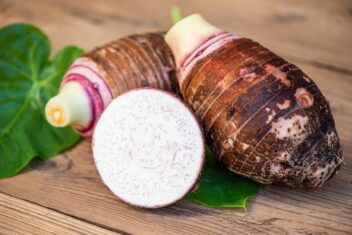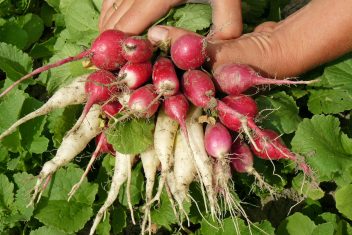It can be frustrating when you want to plant certain species, but your land doesn’t cooperate with your dreams. Instead of fighting it, choose edible plants that can grow in bog or marshy soil.
Honestly, taking advantage of the land you already have is a lot easier than fighting with it.
Besides, if you plant local, indigenous species that love to have wet feet, they’re certain to thrive. After all, they’ve evolved to do well in that exact environment.
The Best Options for Edible Marshy Plants
For most people, the immediate response to deal with a wet area is to dig, fill, and amend their property until it behaves the way they want to.
Rather than putting in all this effort to change the landscape, I recommend working with the land you have, rather than against it.
For example, if you have a sunken, wet area on your property, then plant edible bog plants instead of those that prefer drier soils.
Try to plant species indigenous to your area whenever possible. Yes, most of us love to grow tomatoes and potatoes, but we’ll always have the best luck growing species that evolved to our regions’ specific conditions.
Besides providing you with nourishment, they’ll also offer shelter and food to the local animal, bird, and insect populations. This, in turn, will make your land’s ecosystem healthier and happier overall.
1. Cranberries (Vaccinium macrocarpon)
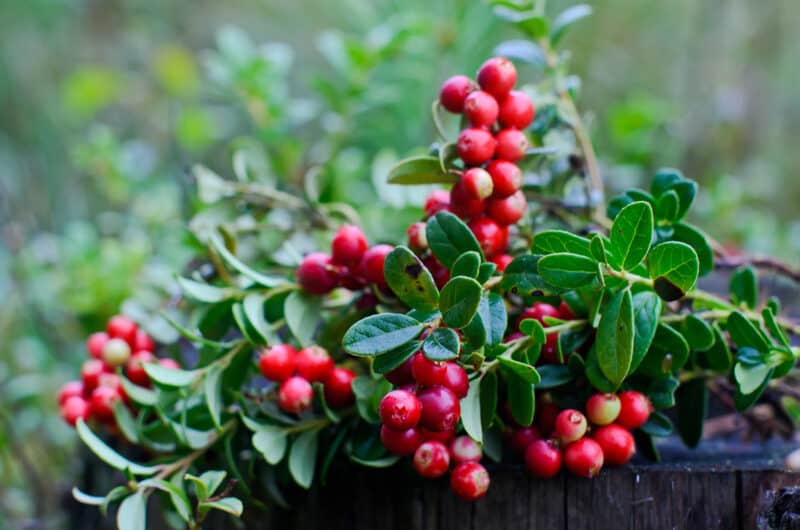
Say hello to one of the most popular edible bog plants. The standard American cranberry grows liberally in sandy, marshy soils all over North America.
It’s one of the easiest bog plants to cultivate, as it loves to be left alone. If you have a bog on your land, chances are you already have one or two of these plants growing there already. If not, well… they’re really easy to grow.
You can either transplant wild cranberry vines, or buy some plants from a reputable garden center. Then, you’ll want to plant them in sandy soil that’s at least eight inches underwater, after the last frost date in springtime.
Once these have matured, you’ll have an eternal source of deliciousness. Also, these berries have a lot of medicinal properties, so you’ll be growing both food and medicine. Win-win all around.
2. Water Chestnuts (Eleocharis dulcis)
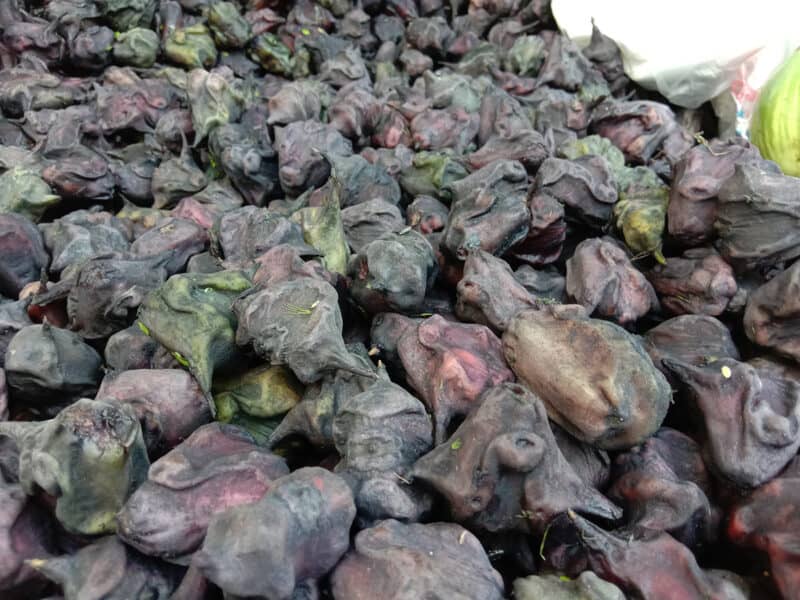
These are notoriously difficult to cultivate, but if you’re feeling adventurous, there’s no harm in trying! You can only grow them outdoors if you’re in zone 8 and above.
Remember that these are native to subtropical and tropical regions throughout Southeast Asia. As such, you’ll only have luck with them if you’re in a fairly warm, wet region.
Yes, Florida and Louisiana growers, we’re looking at you here.
Most people who grow these have the most luck if they grow them in containers. Any deep bucket will do, as long as it’s watertight.
You’ll want to plant the corms (roots) in about 3 inches of soil at the bottom of the container and fill the rest up with water. Then set it in a sunny spot. Make sure the water never evaporates, or the plant will shrivel up and die.
Note that these containers are notorious for breeding mosquitoes. If you want to try growing chestnuts, but you don’t want to be eaten alive, you may want to consider tossing some goldfish into those buckets.
They’ll feast on the mosquito larvae before they can mature into biting jerks.
3. Wild Rice (Zizania aquatica)
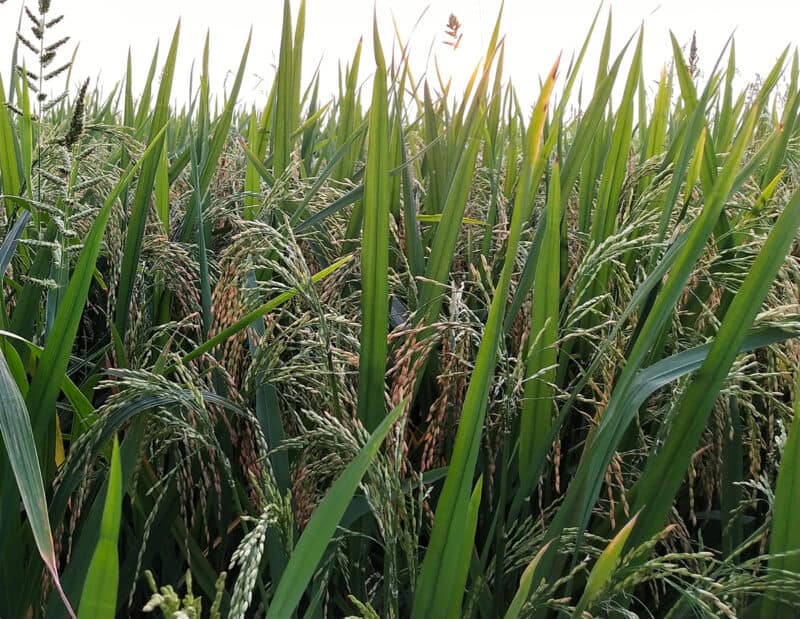
I’m adding wild rice to this list on the off chance that the marshy area on your land is attached to a stream or river. Wild rice is a water plant that creates incredibly nutrient-rich seed grains.
It also requires moving water, as it’ll just rot if the water is stagnant. We’re not talking about swiftly moving water here, or the plants will be torn out and moved downstream.
Rather, they like a current that provides enough movement to prevent stagnancy. If the water current in your marsh has some movement but is barely perceptible to the eye, then you’re golden.
It’s best to grow this plant if it’s already native to your area. Otherwise, it can become an invasive species. Do a quick check to see if it’s already naturalized where you are. This plant thrives from the midwest to the coast, throughout Canada and the USA.
4. Flowering Rush (Butomus umbellatus)
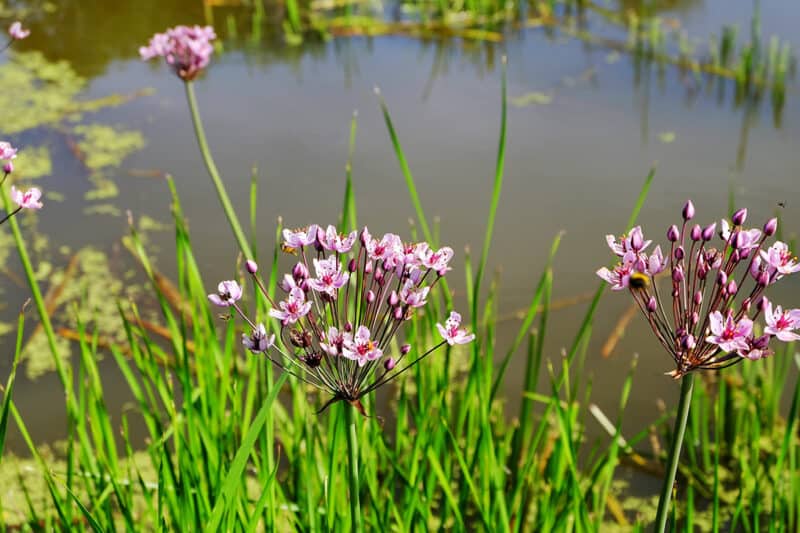
I saw these prolific plants all around England when I was growing up, and never realized that they were edible until years later.
If you’re looking for edible bog plants that need a lot of sunshine, look no further. These require a ton of sunlight and can thrive in both wet soil, and in water.
I’d consider these plants multi-purpose, as you can cook and eat the peeled rootlets as they are, and you can also make a powdery flour if you dry them out.
Use this powder as you would potato or tapioca starch: it’s a good thickening or binding agent, and can also be made into a pudding.
It’s great to have a variety of different bog plants around that provide a variety of nutrients, and uses. For example, you can grow flowering rushes in amongst cranberries and water chestnuts. By doing so, you’ll have three ingredients for simple cakes.
5. Watercress (Nasturtium officinale)
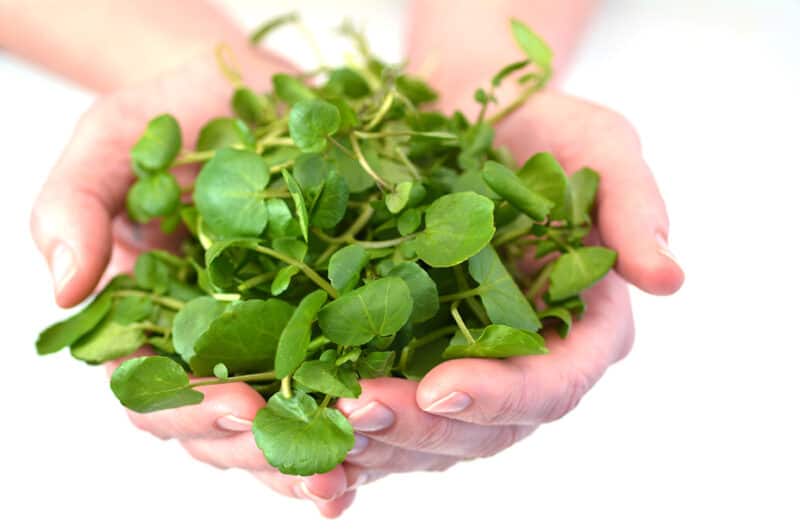
If you’ve never added big fistfuls of watercress to ramen noodle soup or sandwiches, you’re missing out. These peppery wild greens are absolutely delicious and grow like wildfire in most marshy areas.
Cultivating these bog plants is remarkably easy. Just plant seeds in the soil beneath the water by poking them in about 1/4 of an inch. Seeds should be planted about 1/2 an inch apart.
You’ll want them to grow into a dense mat of tasty greenery, so feel free to be generous with the seed sowing. Watercress is a cool-weather crop, so grow yours in early spring and late summer/early autumn.
This plant is tastiest when it’s still quite immature. Start harvesting about two weeks after sowing while the leaves are still tender. Harvest the top 1/3 of each plant, and they should all re-grow within another couple of weeks.
Use the leaves in any recipe where you’d like to add a bit of a peppery bite to your food, along with extra iron, protein, and overall greenery.
6. Water Spinach (Ipomoea aquatica)
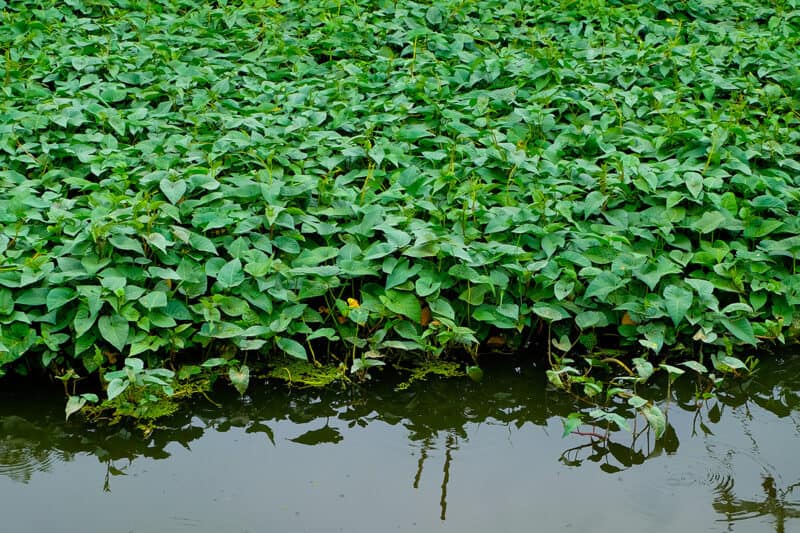
If you’re located in a hot, sunny climate (like in hardiness zones 8-12), consider growing water spinach. This edible bog plant is also known as river spinach, Chinese spinach, or swamp cabbage.
It’s absolutely prolific, is considered an invasive pest in many US states (especially Florida), and is surprisingly tasty.
You can cook the shoots and tender leaves the same way you’d cook regular spinach, chard, or other leafy greens.
Note that even though this perennial plant is hardy in zones 8-12, that doesn’t mean you can’t grow it in boggy spots elsewhere.
You’ll just have to cultivate it as an annual instead of a perennial, since it won’t survive a cold winter. Just work some compost into the soil before planting it so it has plenty of nourishment as it grows.
7. Taro Root (Colocasia esculenta)
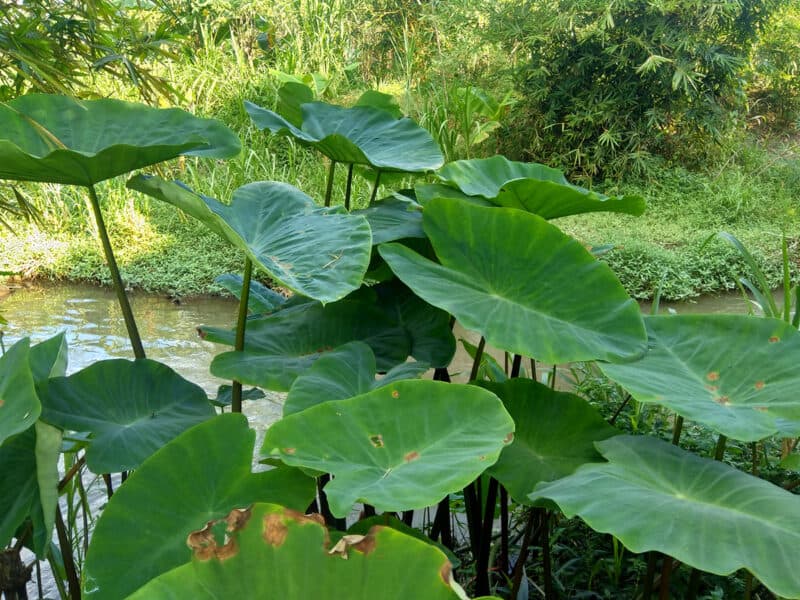
Although taro is a tropical plant, you can grow it pretty much anywhere as long as you keep it warm. This plant needs at least 200 frost-free days in order to grow to complete maturity.
These tasty tubers are high in vitamins E and B6, as well as manganese and potassium. You can cook them as you would potatoes, or use them in a variety of different recipes.
If you’re feeling adventurous, try making a wild, foraged, and homegrown version of wu gok dumplings. You can use any game meat in them, as well as eggs from your own chickens, and maybe some rush flour.
8. Sacred Lotus (Nelumbo nucifera)
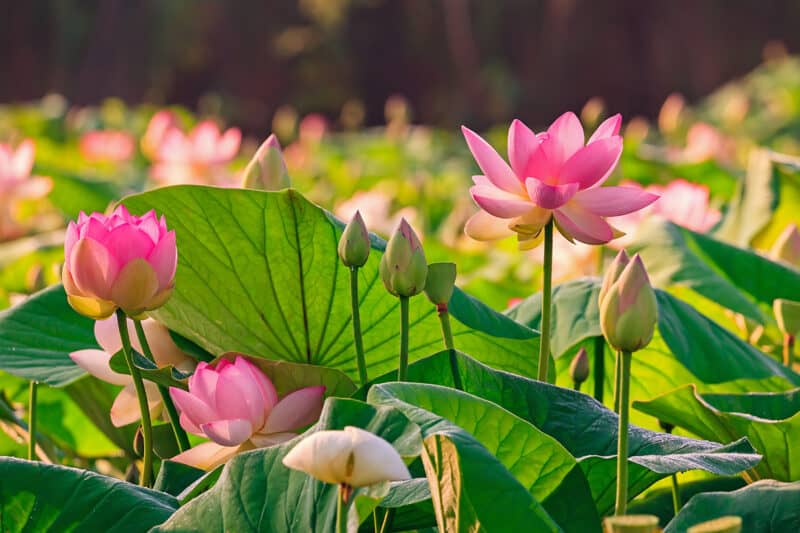
Did you know that you can eat every part of the sacred lotus plant? Many people have tasted fried lotus root at Chinese restaurants without realizing they could grow it at home.
You can steam or stir-fry the stalks like asparagus and make the flower petals into tea. The root can also be sliced really thinly and dehydrated into chips.
Plant your lotus tubers about an inch and a half deep in soil that’s under at least two feet of water. Alternatively, you can plant them in containers that have rocks at the bottom for weight, and then sink those into water.
Lotus roots are at their crunchiest and juiciest in mid to late summer.
9. Cattails (Typha)
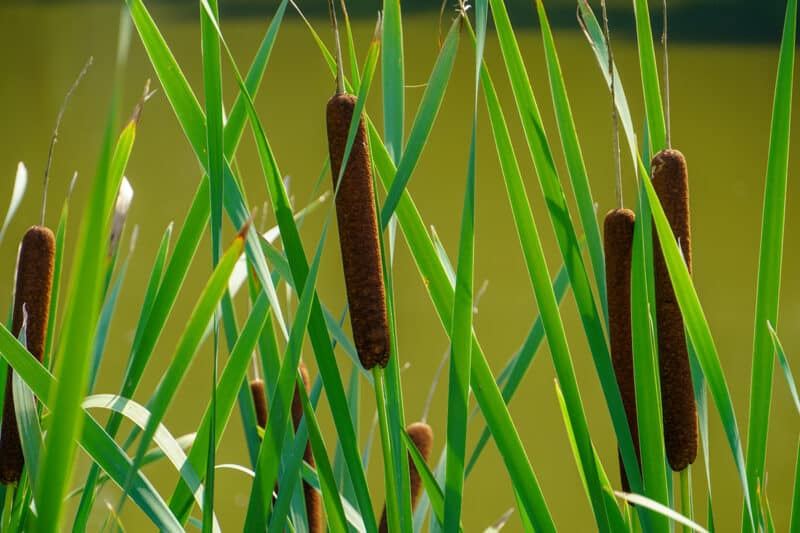
I know I’ve referenced this species in several previous guides, but it’s always for a good reason. Considering that you can eat cattail roots, shoots, buds, and pollen, they’re a rather invaluable plant for any edible bog or marsh garden.
They grow pretty much everywhere, in zones 3 through 11, and they’re incredibly low maintenance.
Cattails are basically a one-stop supermarket since you can eat every part of them and use their parts for so many different projects. Their stalks make great arrow shafts, and their fluff can be used to stuff pillows.
Meanwhile, you can use their long leaves to make chair seats or to weave baskets. If you’re able to grow cattails on your land, I can’t recommend these highly enough.
